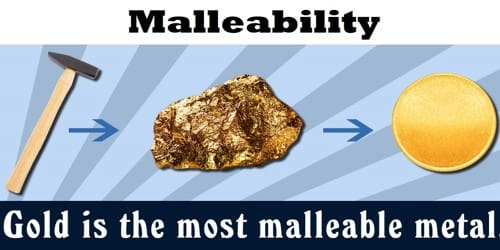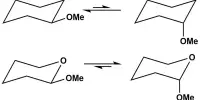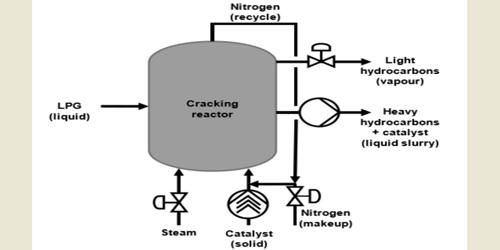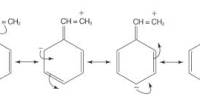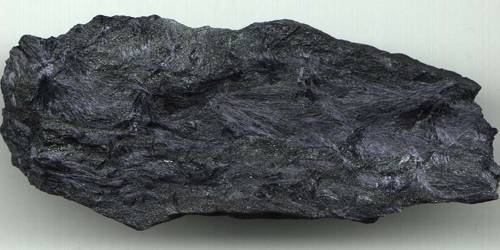Malleability is a substance’s ability to deform under pressure (compressive stress). It is the ability of a substance, usually a metal, to be deformed or molded into a different shape. If malleable, a material may be flattened into thin sheets by hammering or rolling. Malleable materials can be flattened into metal leaves. One well-known type of metal leaf is gold leaf. Many metals with high malleability also have high ductility. Some do not; for example lead has low ductility but high malleability. It is the quality of something that can be shaped into something else without breaking, as the malleability of clay. This property in engineering applications allows for the manufacture of a wide variety of products, from pots and pans to coins for currency.
Malleability is a physical property of matter, usually metals. It is the property of a substance by which it can be hammered into thin sheets. Examples of Malleable metals include Gold, Silver, Copper, etc. The property usually applies to the family groups 1 to 12 on the modern periodic table of elements. Malleability in metals occurs because of the metallic bonds that keep the atoms in place. It is the ability of a solid to bend or be hammered into other shapes without breaking. In other words, it is the property of a metal to deform under compression and take on a new shape. Examples of malleable metals are gold, iron, aluminum, copper, silver, and lead.
Gold and silver are highly malleable. When a piece of hot iron is hammered it takes the shape of a sheet. The property is not seen in non-metals. Non-malleable metals may break apart when struck by a hammer. The force can come from a blow from a hammer, the impact from a fall, high pressure from being squeezed, or from a collision. Malleable metals usually bend and twist in various shapes.
The degree of malleability varies widely among metals as well as mixtures of different metals, also known as alloys. Zinc is malleable at temperatures between 100 and 200 °C but is brittle at other temperatures. Differences in malleability among different metals are due to variances in their crystal structures.
